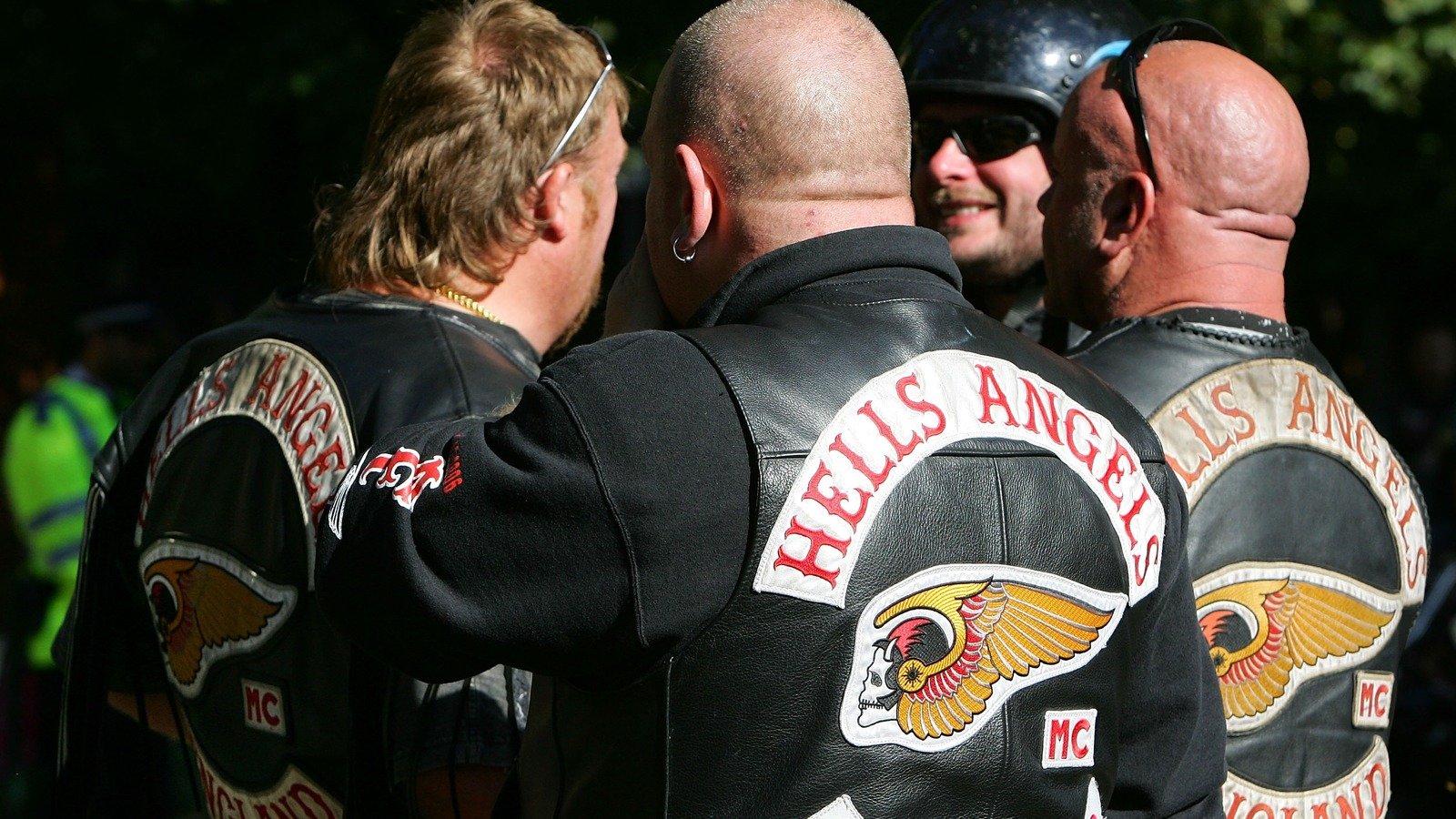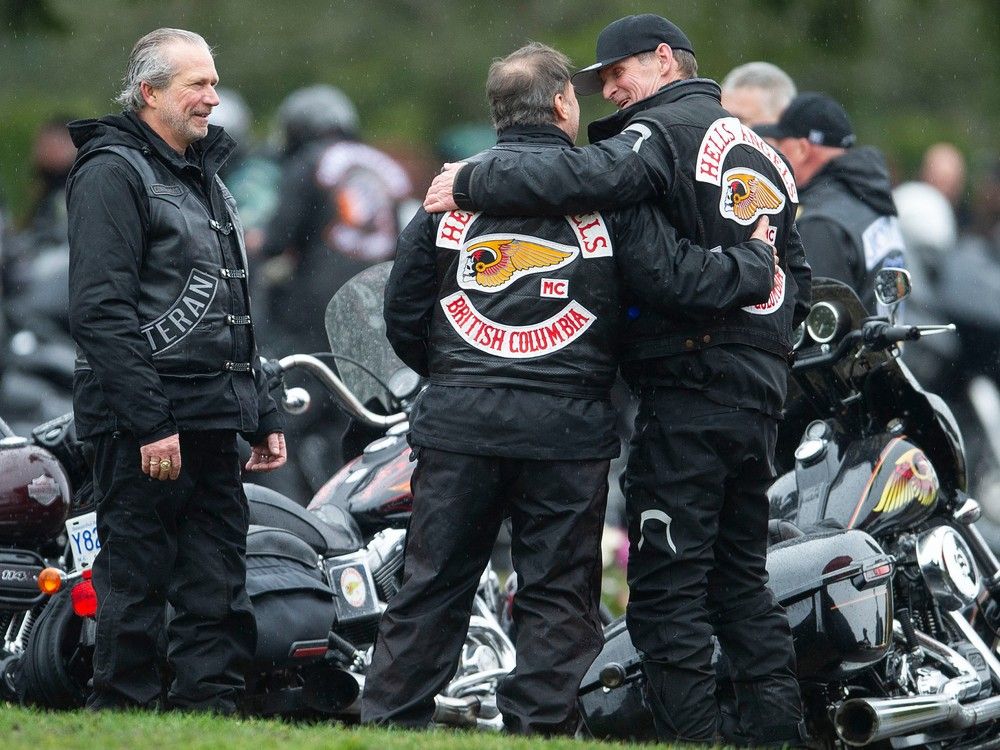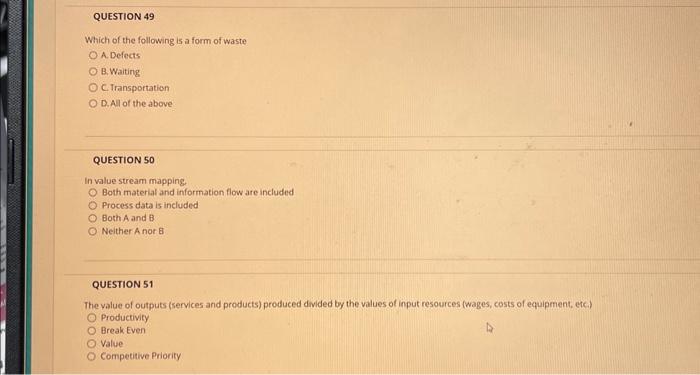The Hells Angels: A Look Into Their Criminal Activities And Culture

Table of Contents
The Hells Angels' Criminal Enterprises
The Hells Angels' notoriety stems largely from their extensive involvement in various illegal activities. Their operations are sophisticated, often spanning international borders and involving intricate networks of individuals and organizations.
Drug Trafficking
The Hells Angels are heavily involved in the international drug trade, acting as manufacturers, distributors, and sellers. Their operations are far-reaching and highly profitable.
- Specific Drugs: Cocaine, methamphetamine, heroin, and marijuana are among the drugs trafficked by the HAMC. They often leverage their established networks to move large quantities of drugs across continents.
- Global Reach: The Hells Angels' global network of chapters facilitates drug trafficking across borders, making it incredibly difficult for law enforcement to track and disrupt their operations. They utilize sophisticated smuggling techniques, exploiting weaknesses in border security and transportation systems.
- Methods of Distribution: The Hells Angels use various methods, including hidden compartments in vehicles, maritime smuggling, and private aviation, to transport drugs. They also employ complex money laundering schemes to obscure the origin of their profits.
- High-Profile Cases: Numerous high-profile busts and prosecutions have highlighted the Hells Angels' involvement in drug trafficking, revealing the scale and scope of their operations. The seizures of massive quantities of narcotics and the subsequent arrests of key members serve as stark examples of the dangers they pose.
Weapon Smuggling
The acquisition and distribution of illegal firearms and other weapons are integral to the Hells Angels' operations. These weapons are crucial for enforcing their control, intimidating rivals, and perpetrating violence.
- Types of Weapons: The Hells Angels traffic a wide range of weapons, from handguns and assault rifles to explosives and military-grade weaponry. Access to these weapons further strengthens their ability to engage in violent acts.
- Connections to Other Criminal Organizations: The HAMC often collaborates with other criminal organizations to source and distribute weapons, expanding their reach and influence. These alliances create complex criminal networks that are challenging to dismantle.
- Smuggling Methods: Similar to drug trafficking, weapon smuggling relies on sophisticated techniques, including hidden compartments in vehicles, concealed shipments, and corrupt officials facilitating the movement of weapons across borders.
- Weapon Seizures: Law enforcement seizures of significant quantities of illegal weapons linked to Hells Angels chapters serve as evidence of their involvement in this lucrative and dangerous criminal activity.
Extortion and Racketeering
The Hells Angels use intimidation, violence, and threats to extort money from businesses and individuals, maintaining control over various territories and criminal enterprises.
- Extortion Schemes: They often demand "protection money" from businesses, threatening violence or damage if payments are not made. This creates a climate of fear and coercion, crippling legitimate businesses.
- Protection Rackets: They establish protection rackets, promising security but using their power to extort funds and control businesses within their territories. This allows them to exert control and eliminate competition.
- Intimidation Tactics: Violence, vandalism, and threats are common tactics used to intimidate victims and enforce their demands. This creates an environment of fear and discourages victims from reporting crimes.
- Targeted Businesses: The Hells Angels have targeted a wide range of businesses, from bars and nightclubs to trucking companies and construction firms. Their impact on legitimate businesses is considerable, damaging local economies.
Money Laundering
The Hells Angels employ complex financial schemes to launder the vast sums of money generated from their illegal activities. This allows them to obscure the origin of their ill-gotten gains and maintain a veneer of legitimacy.
- Techniques: Shell corporations, offshore accounts, real estate investments, and other sophisticated financial maneuvers are employed to conceal the proceeds of their criminal enterprises.
- Investigation Challenges: Tracing and seizing Hells Angels' assets is extremely difficult due to the complexity of their financial schemes and their international reach. Their operations require coordinated international efforts to effectively investigate and prosecute.
- Global Scale: Their money laundering activities are global in scope, requiring collaboration among law enforcement agencies worldwide to trace their financial flows and dismantle their networks.
The Hells Angels' Subculture and Social Structure
Understanding the Hells Angels requires examining their unique subculture and intricate internal organization. This "brotherhood" mentality, coupled with a strong biker identity and global network, sustains their power and influence.
The "Brotherhood" Mentality
The Hells Angels cultivate a strong sense of loyalty and camaraderie among its members. This "brotherhood" is crucial to their cohesion and operational effectiveness.
- Initiation Rituals: Strict initiation rituals solidify members' commitment and loyalty to the club. These rituals often involve acts of violence and demonstrate unwavering allegiance.
- Hierarchical Structure: A hierarchical structure with different ranks and patches designates authority and responsibilities within the club. This organized structure enhances their operational efficiency.
- Loyalty and Brotherhood: The emphasis on loyalty and brotherhood fosters strong bonds, promoting mutual support and protection among members. This is a powerful force that strengthens their unity and resolve.
- Psychological Aspects: The strong group identity provides a sense of belonging and purpose for members, often drawn from disenfranchised backgrounds or seeking a sense of community.
Motorcycle Culture and Identity
Motorcycles are central to the Hells Angels' identity and serve as a powerful symbol of rebellion and freedom.
- Motorcycle Rallies: Large motorcycle rallies serve as both social gatherings and opportunities to showcase their power and influence. These events draw members from around the world and demonstrate their global reach.
- Custom Bikes: Customized motorcycles are a significant aspect of their culture, expressing individual style while also representing the club's image and power.
- Visual Representation: The iconic Hells Angels logo and distinctive clothing reinforce their identity and serve as a powerful symbol of their presence and power.
- Recruiting Tool: Motorcycle culture acts as a powerful recruiting tool, attracting individuals who are drawn to the outlaw biker lifestyle and the sense of brotherhood it offers.
Global Chapters and Networks
The Hells Angels' global network of chapters demonstrates the club's reach and the coordination of its criminal activities across borders.
- Chapter Structure: The club is organized into numerous chapters worldwide, each operating within a specific territory. This decentralized structure facilitates their criminal operations and makes them harder to target.
- Communication Networks: Effective communication networks allow for the coordination of activities across chapters, enabling them to move drugs, weapons, and money across international borders seamlessly.
- Coordination of Criminal Activities: The global network facilitates the coordination of criminal activities across borders, allowing them to operate on a scale that is exceptionally difficult for law enforcement to combat.
- Global Presence: The Hells Angels' presence spans numerous countries, highlighting the complexity of dealing with this transnational criminal organization. Their global reach necessitates international cooperation to combat their criminal activities.
Conclusion
This exploration of the Hells Angels Motorcycle Club reveals a complex organization operating at the intersection of organized crime and counter-culture. Their involvement in drug trafficking, weapon smuggling, extortion, and money laundering poses a significant global threat. Understanding their intricate social structure, "brotherhood" mentality, and global network is crucial for developing effective countermeasures. Further research and investigation into the Hells Angels and other outlaw motorcycle gangs are essential to combat their criminal activities and protect communities worldwide. To stay informed about the ongoing challenges posed by the Hells Angels and similar organizations, continue your research and stay updated on the latest developments in the world of outlaw motorcycle gangs.

Featured Posts
-
 Spectacle De Zize Humoriste Transformiste A Graveson 4 Avril
May 26, 2025
Spectacle De Zize Humoriste Transformiste A Graveson 4 Avril
May 26, 2025 -
 Hells Angels A Critical Analysis
May 26, 2025
Hells Angels A Critical Analysis
May 26, 2025 -
 Southern Destination Responds To Negative Safety Assessment Following Incident
May 26, 2025
Southern Destination Responds To Negative Safety Assessment Following Incident
May 26, 2025 -
 Community Remembers Craig Mc Ilquham Hells Angels Memorial
May 26, 2025
Community Remembers Craig Mc Ilquham Hells Angels Memorial
May 26, 2025 -
 Hells Angels Business Model The Significance Of The Mandarin Killing Incident
May 26, 2025
Hells Angels Business Model The Significance Of The Mandarin Killing Incident
May 26, 2025
